Welcoming a pet into your home is like adding a new member to the family, one that brings joy, companionship, and a few design challenges. Whether you’re a novice decorator or have years of design experience, creating a home that is both stylish and pet-friendly can seem daunting, yet incredibly rewarding.
In this article, we’ll explore 11 innovative decor solutions that cater to the needs of your furry friends while maintaining the aesthetic integrity of your home. You’ll discover practical tips that blend functionality with flair, transforming your living spaces into harmonious havens for both humans and pets.
As we delve into these ideas, you’ll learn how to select materials that are durable yet beautiful, and how to cleverly adapt your space to accommodate your pets’ needs. Whether you’re looking to refresh a single room or undertake a full home makeover, these solutions will inspire you to create a pet-friendly environment without compromising on style.
Choosing Durable Fabrics for Pets
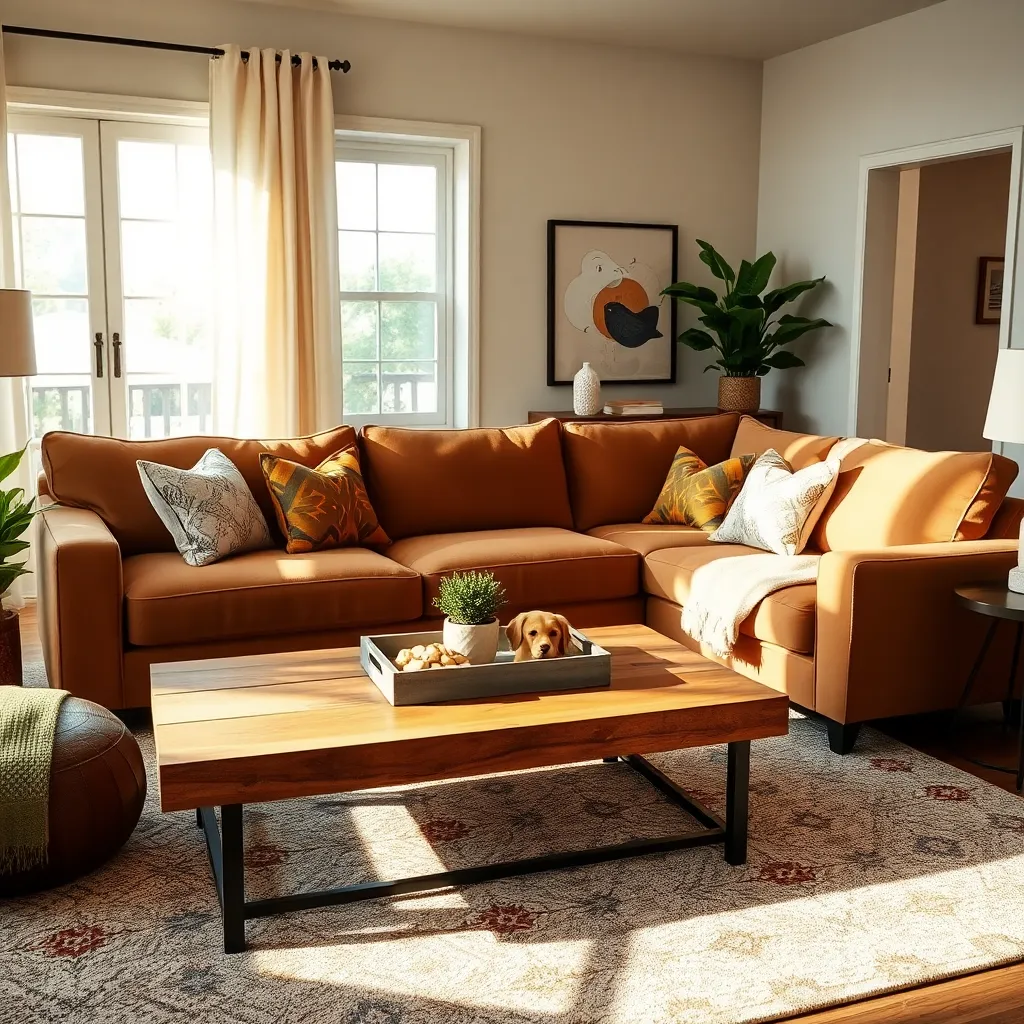
When selecting fabrics for a pet-friendly home, it’s essential to consider materials that can withstand claws and fur. Microfiber and leather are excellent choices because they are both durable and easy to clean.
Microfiber is a popular option due to its tightly woven fibers that resist scratches and repel pet hair. In addition, it comes in a variety of colors, allowing you to match it seamlessly with your existing decor.
Leather furniture, though slightly more expensive, offers a sleek and sophisticated look while being incredibly resilient against pet wear and tear. Opt for top-grain leather for its thickness and ability to hide minor scratches over time.
For fabrics like canvas or denim, which are also pet-friendly, consider incorporating them in less formal spaces for a casual yet stylish vibe. These materials can be used for slipcovers, which are not only washable but can be swapped out to refresh your room’s look.
Incorporating Stylish Pet Furniture
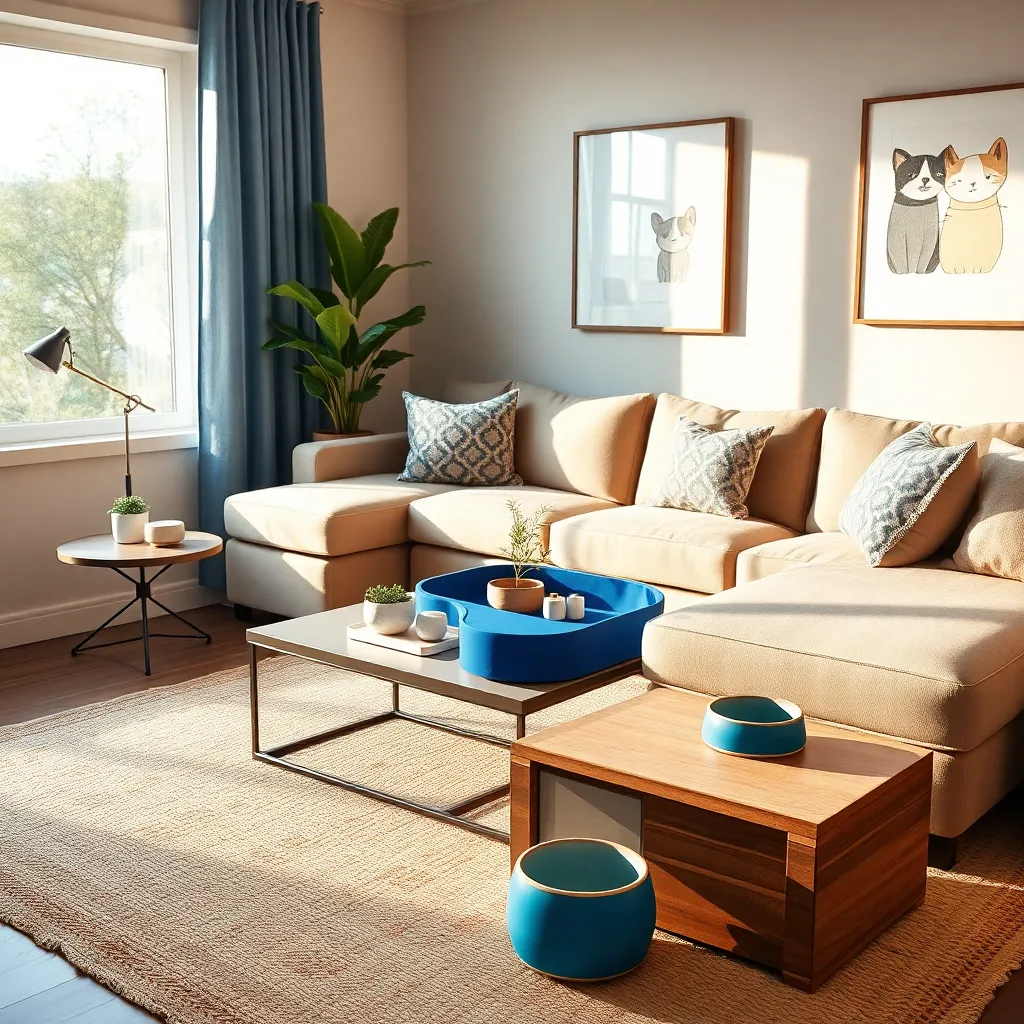
Incorporating stylish pet furniture into your home doesn’t mean compromising on aesthetics. Consider choosing pieces that complement your existing decor, such as a mid-century modern pet bed that mirrors the clean lines and wood tones of your living room furniture.
Opt for pet furniture in neutral colors like grays, beiges, or soft pastels to seamlessly blend with your space. This approach ensures that the pet furniture doesn’t clash with your existing color scheme, creating a harmonious environment.
When selecting materials, prioritize durability and ease of cleaning. Look for high-quality fabrics like microfiber or leather, which are both stylish and resistant to wear and tear from claws and fur.
Strategically place pet furniture to integrate it into your living space naturally. A cozy pet bed can be positioned near a window to give your furry friend a sunny spot to relax, while also doubling as a decorative element in the room.
For those seeking a more advanced approach, consider custom-built pet furniture that serves dual purposes. A built-in litter box enclosure with a decorative facade can maintain your home’s elegance while providing functionality.
Finally, remember to accessorize pet furniture with stylish elements that match your decor. Consider adding a faux fur throw or a chic cushion to your pet’s bed to enhance its visual appeal while providing additional comfort.
Pet-Safe Flooring Options Explained
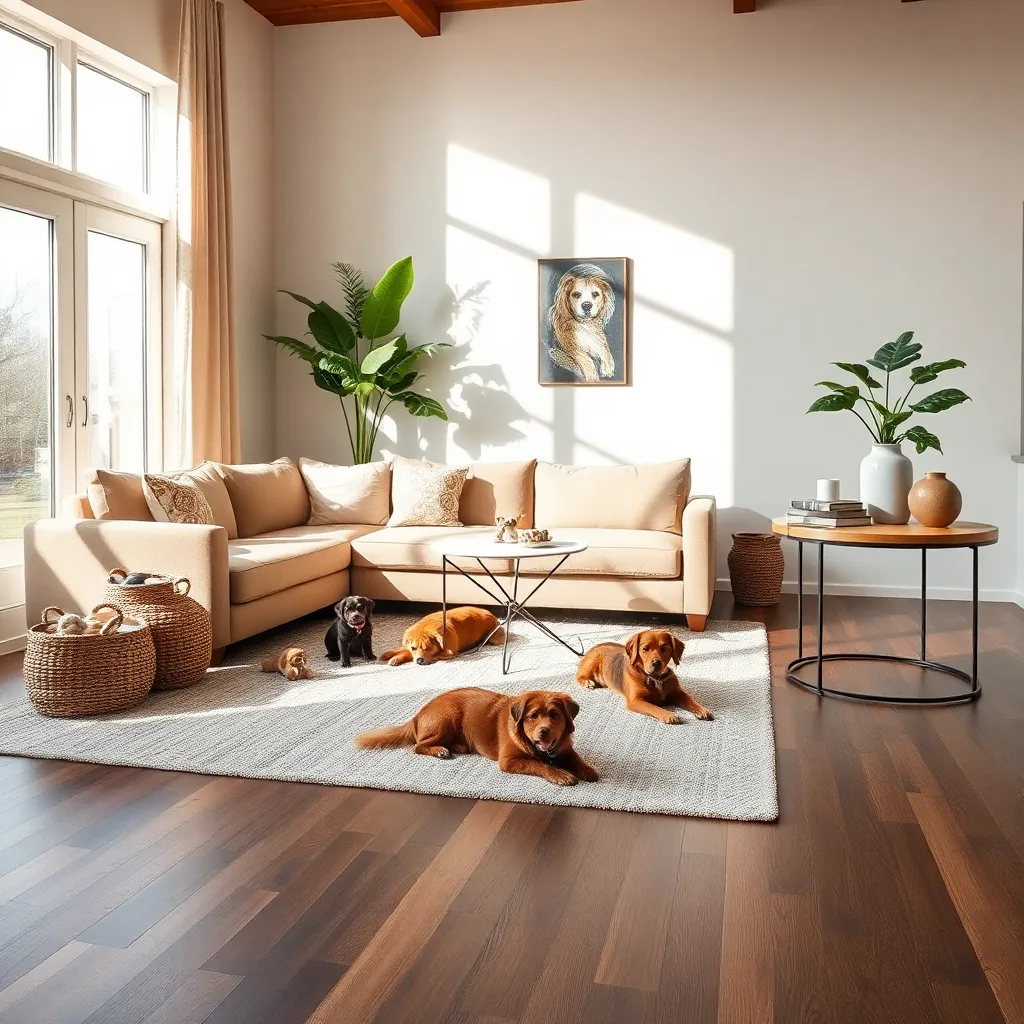
When choosing pet-safe flooring, durability and ease of cleaning are key considerations. Opt for materials like vinyl or laminate, which are resilient against scratches and simple to maintain.
Vinyl flooring offers a wide range of styles, mimicking hardwood or stone, while being water-resistant. This makes it a perfect choice for homes with pets prone to spills or accidents, ensuring both style and practicality.
Laminate flooring is another excellent option, as it resists scratches and stains better than traditional hardwood. To maximize its lifespan, select a high-quality laminate with a thick wear layer and consider a light to medium tone to help camouflage pet hair and minor scuffs.
For those seeking a more natural look, engineered hardwood can be a pet-friendly choice if you select a finish with a strong protective coating. However, to further improve its pet-friendliness, use area rugs or runners in high-traffic areas to protect against wear and tear.
Designing Cozy Pet Nooks
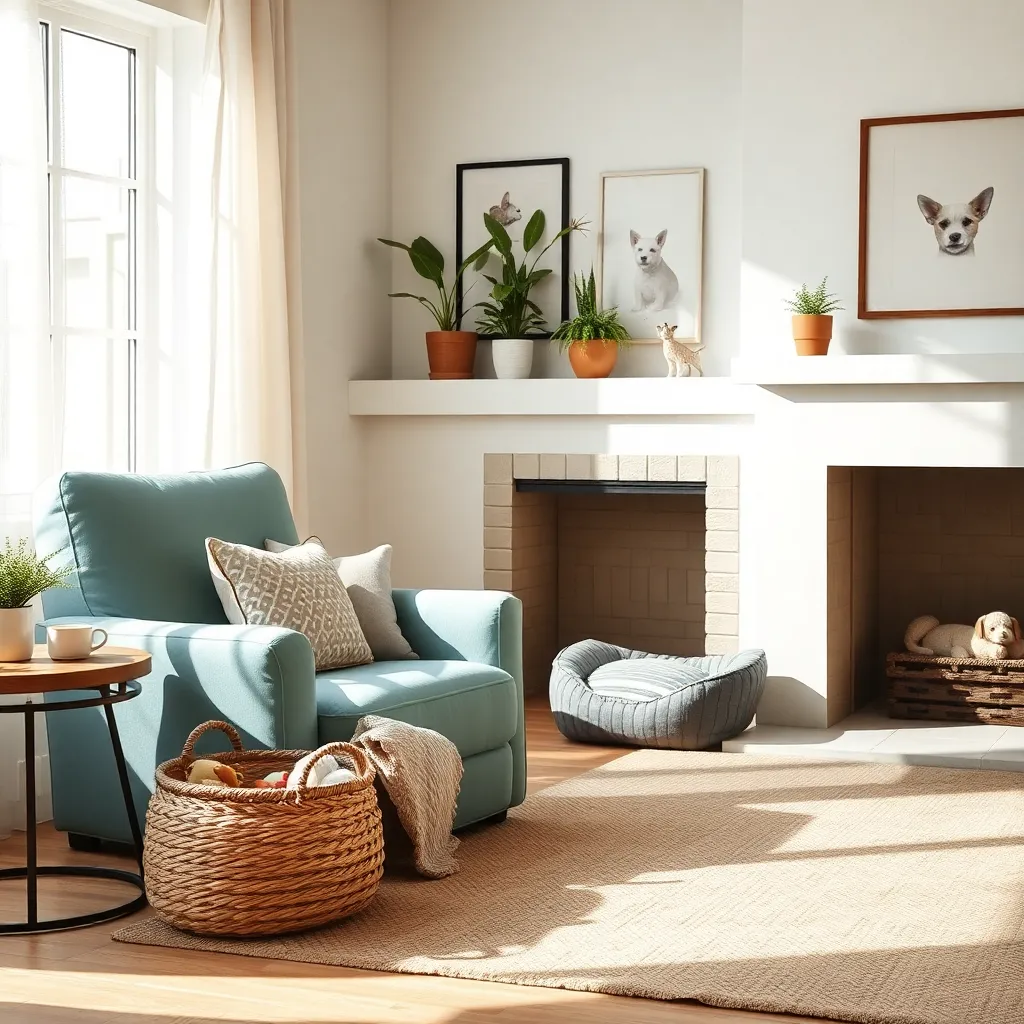
Creating a cozy pet nook is a delightful way to integrate your furry friend’s space into your home decor seamlessly. Begin by selecting a quiet corner in a room where you spend a lot of time, such as the living room or bedroom, to help your pet feel included and secure.
Choose a pet bed that complements your existing decor while providing comfort, such as a plush, neutral-toned bed that matches your sofa or curtains. For a more cohesive look, consider using materials like durable canvas or washable microfiber that can withstand wear and are easy to clean.
Incorporate a pet-friendly color scheme by blending the nook with your room’s palette; soft pastels or warm earth tones can create a calming atmosphere. Accessorize with pet-safe plants, such as spider plants or Boston ferns, to add a touch of nature without compromising your pet’s safety.
To personalize the space, add accessories that reflect your pet’s personality, such as custom name plaques or matching pillows. Advanced decorators might consider building a small shelf above the nook to display pet-themed artwork or photographs, adding charm and character to the space.
Decorating with Pet-Friendly Plants
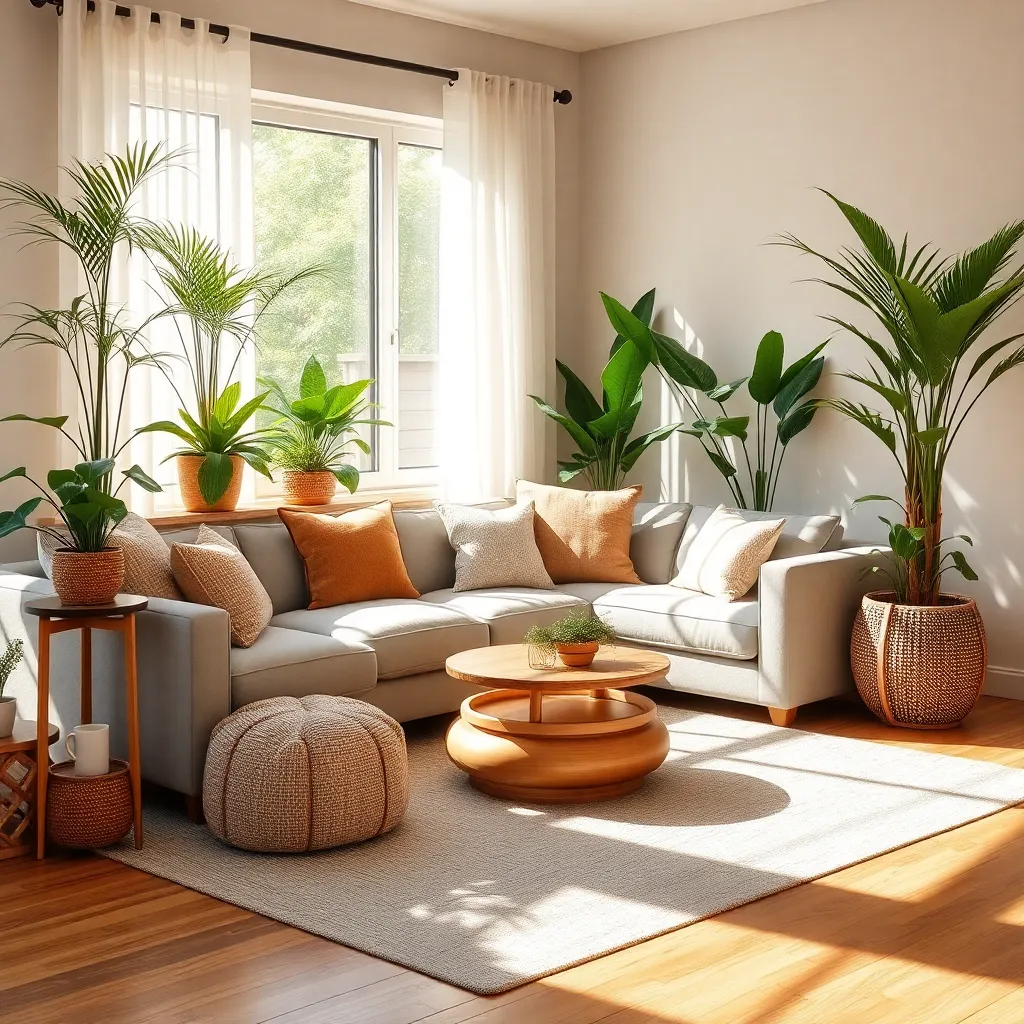
Incorporating pet-friendly plants into your home is an excellent way to add vibrant greenery while ensuring your furry friends are safe. Start by selecting non-toxic plants like Boston ferns, spider plants, and bamboo palms, which are safe for both cats and dogs.
Placement of these plants is key to maintaining both aesthetics and accessibility. Arrange plants at varying heights using plant stands, shelves, or hanging planters to create visual interest and keep plants out of reach of curious pets.
For a cohesive look, consider using planters that match your existing decor. Opt for neutral tones or natural materials like terracotta and ceramic, which blend seamlessly with a variety of color schemes and styles.
To enhance your space further, use plants as a design element by grouping them in odd numbers for a more organic feel. Advanced decorators can experiment with color-blocking techniques, pairing plants with similar foliage colors in strategic spots to create a harmonious flow throughout the room.
Storage Solutions for Pet Supplies
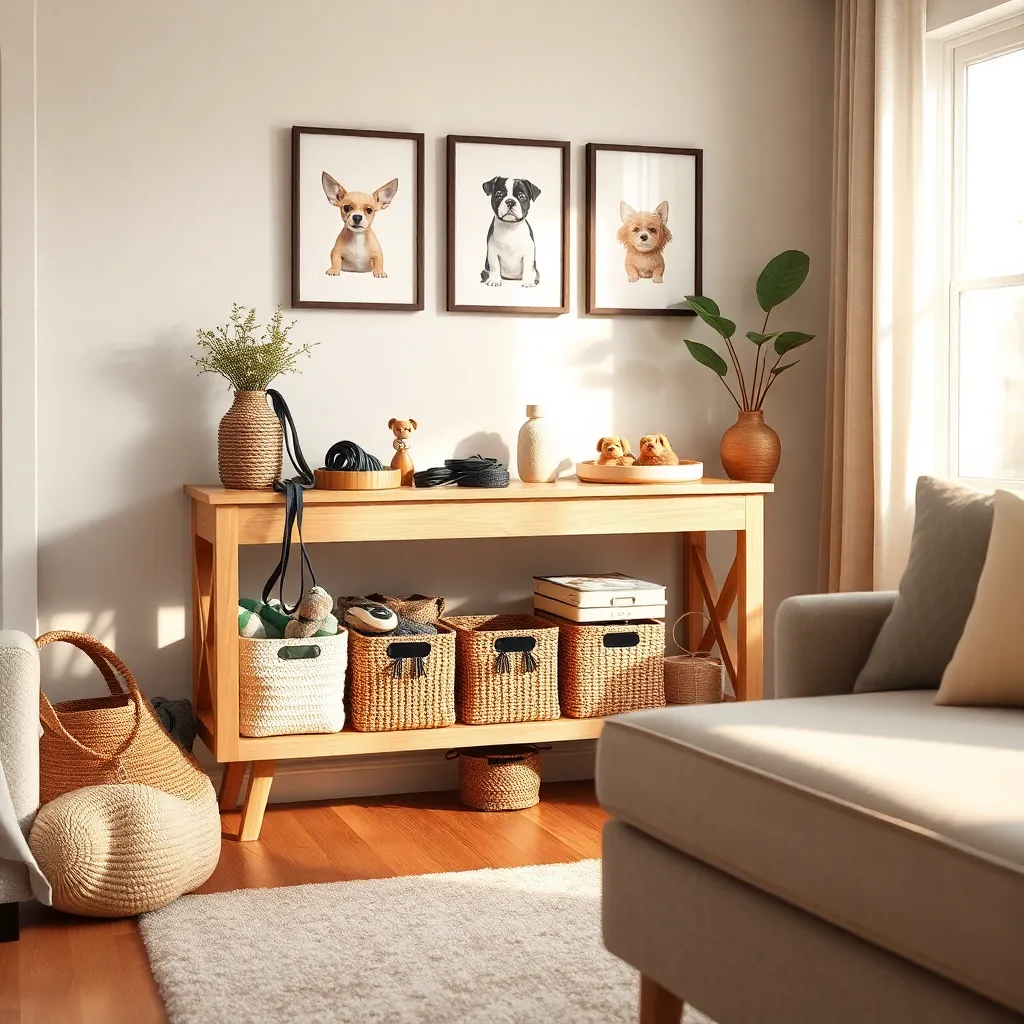
Organizing pet supplies efficiently can transform your home into a more serene and stylish space. Consider using a multi-functional furniture piece like a storage bench or ottoman, which provides both a seating area and hidden storage for toys, leashes, and treats.
For a more tailored approach, install a dedicated pet supply cabinet that matches your existing decor. Opt for cabinets with adjustable shelving to accommodate items of varying sizes, ensuring everything from grooming tools to food containers has a designated spot.
Incorporating stylish storage baskets or bins can help maintain a tidy appearance while keeping pet essentials within easy reach. Choose materials such as wicker or fabric that complement your home’s color palette, adding a touch of texture and warmth to the room.
Advanced decorators might consider integrating built-in storage solutions, like a custom wall unit designed specifically for pet needs. This could include pull-out drawers for food storage, hooks for leashes, and even a cubby for a pet bed, merging functionality with elegance seamlessly.
Integrating Pet Gates with Style
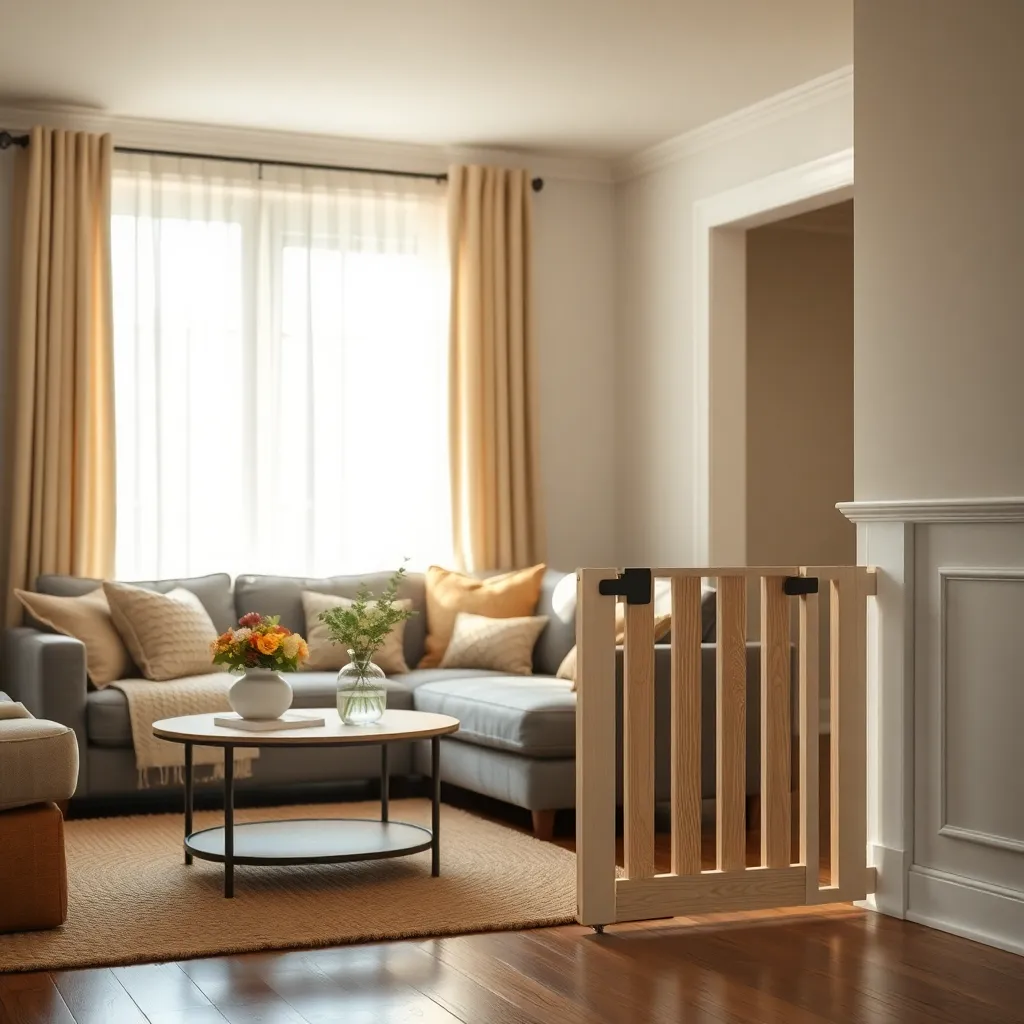
Incorporating pet gates into your home doesn’t have to compromise style. Choose gates made from materials like wood or metal that complement your existing decor while providing a durable barrier for your pets.
Consider a custom pet gate that matches your home’s trim or furniture finishes for a seamless look. Opt for neutral colors such as white, black, or natural wood tones to ensure the gate blends effortlessly with your interior color scheme.
Placement is key; install pet gates in areas that naturally divide spaces, such as doorways or staircases. This not only keeps your pets safe but also maintains the flow and aesthetic of your home without unnecessary obstruction.
For an advanced touch, add decorative elements like wrought iron detailing or geometric patterns to elevate the gate’s appearance. Ensure these enhancements align with your home’s overall design theme, whether it’s modern, rustic, or traditional, to create a cohesive environment.
Color Schemes That Hide Fur
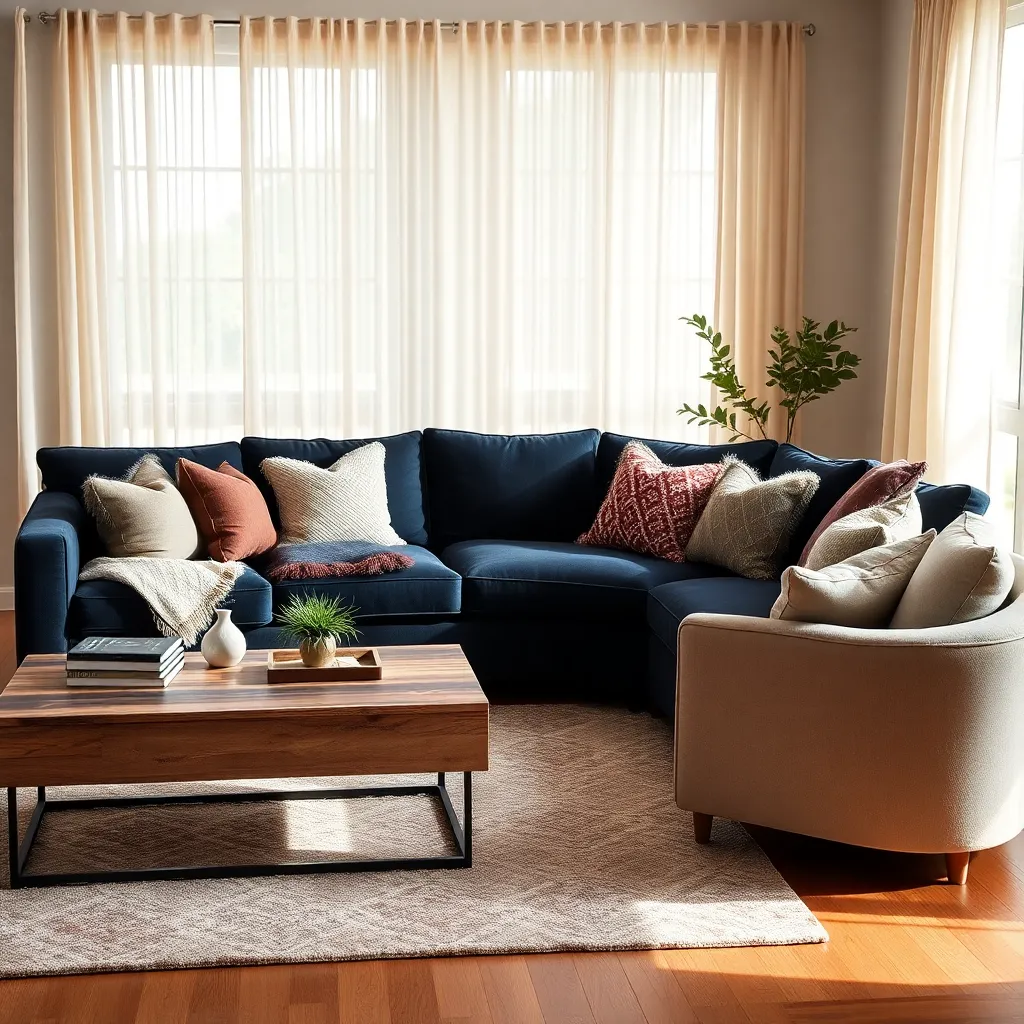
Choosing the right color scheme is crucial when you have pets, especially if you want to minimize the visibility of fur. Opt for neutral tones like taupe, grey, or beige, which blend well with most pet fur colors and are easy to maintain.
For those with pets that shed lighter fur, consider using earthy hues such as olive or sand. These colors not only hide fur effectively but also add a warm and inviting feel to your space.
Incorporating patterns like herringbone or geometric prints can also be a game-changer. Such designs not only distract from pet hair but also add a dynamic element to your decor, making it visually interesting.
To further enhance the camouflage effect, consider using textured fabrics such as tweed or chenille for furniture upholstery. These materials are not only durable but also have the added benefit of hiding fur and minor stains better than smoother fabrics.
Organizing Pet Toys Creatively
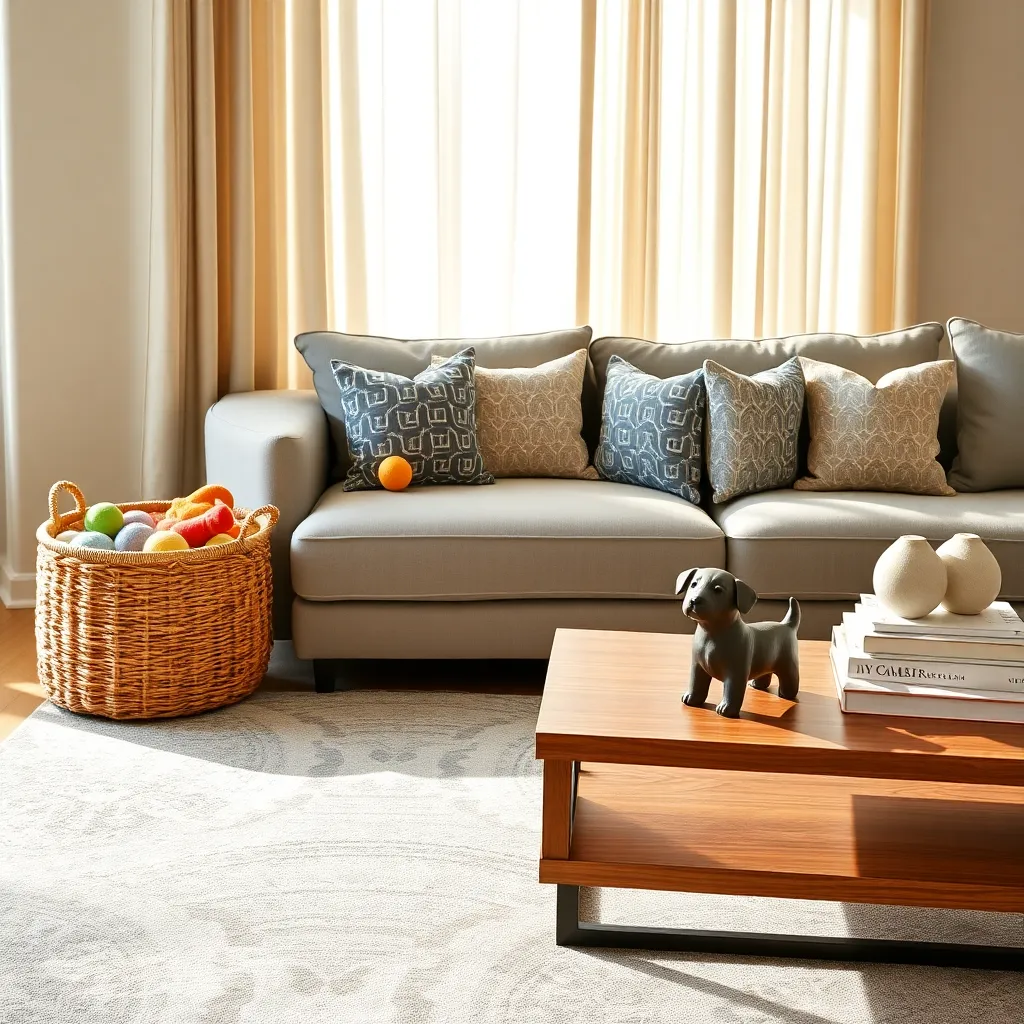
When organizing pet toys creatively, consider using stylish storage solutions that blend seamlessly with your home decor. Decorative baskets made from materials like wicker or cotton rope can provide a chic storage option while keeping toys accessible for your furry friends.
For a more polished look, incorporate furniture pieces that double as storage, such as an ottoman with hidden compartments. This not only helps in maintaining a clutter-free space but also adds functionality to your living room or bedroom setup.
Mounting a series of small shelves at a low height on a wall can create a playful yet organized display for toys. Use shelves in colors that complement your room’s palette, ensuring they become a cohesive element rather than a distraction.
For those with a flair for DIY projects, consider repurposing an old bench or cabinet by painting it in a vibrant hue that contrasts with your existing furniture. Adding hooks or small bins inside provides an organized space for toys, making it easy for both you and your pet to access them when needed.
Selecting Washable Rugs and Carpets
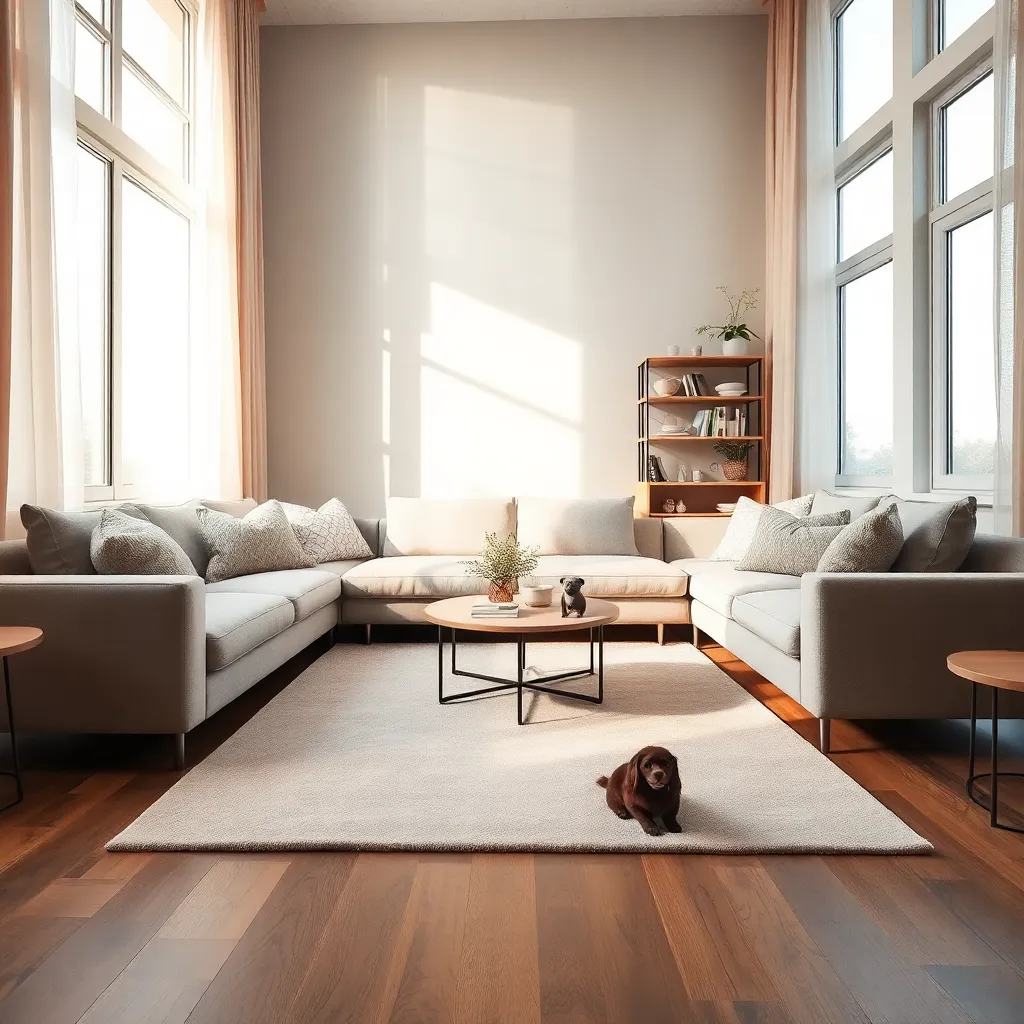
When selecting washable rugs and carpets, consider materials such as cotton, wool, or specially designed synthetic fibers that offer both durability and ease of cleaning. These materials not only withstand frequent washing but also resist stains, making them ideal for pet-friendly homes.
It’s essential to choose rugs with a low pile height as they are easier to clean and less likely to trap pet hair and dander. Additionally, low pile rugs tend to dry more quickly after washing, reducing the risk of mold or mildew.
For color schemes, opt for patterns and colors that can help disguise pet hair and minor stains, such as speckled patterns or earth tones. This approach not only maintains a clean appearance but also complements various interior styles from modern to rustic.
Placement of washable rugs should focus on high-traffic areas where pets frequently roam, like entryways, living rooms, and under feeding stations. Use a non-slip rug pad underneath to prevent slipping and add an extra layer of protection for your flooring.
Embracing Easy-to-Clean Surfaces

Incorporating easy-to-clean surfaces into your home is a practical way to maintain style and functionality, especially in pet-friendly environments. Opt for materials like leather or faux leather for sofas and chairs, as they can easily be wiped down to remove fur and spills.
For kitchen countertops and tables, consider using quartz or laminate, which are durable and resistant to stains. Their non-porous nature makes them ideal for quick clean-ups, ensuring your home stays fresh and inviting.
Another great option is to use glossy or semi-glossy paint on walls, particularly in high-traffic areas. These finishes are more resistant to dirt and can be wiped clean with minimal effort, making them perfect for homes with pets.
When selecting flooring, look for vinyl or tile options that offer both durability and ease of maintenance. These materials not only withstand scratches from pet claws but also allow for simple spot cleaning, keeping your floors looking pristine.
Conclusion: Growing Success with These Plants
As we navigate the journey of blending style and companionship, the 11 pet-friendly home decor solutions we explored offer more than just aesthetic enhancement—they nurture the bond between you and your furry friends. From choosing durable, chic materials and creating cozy pet nooks, to incorporating pet-friendly plants and smart storage solutions, each concept is designed to make your home a harmonious haven for all its inhabitants. These strategies not only beautify your living space but also strengthen the connection with your beloved pets, fostering a loving and inviting environment.
To begin transforming your home today, start by implementing one small change, like selecting a piece of pet-friendly furniture or rearranging a space to better accommodate your pet’s needs. As you see the benefits unfold, let this inspire further creative adjustments.
Remember, creating a pet-friendly home is an ongoing journey, much like any relationship’s growth and success. Bookmark this article to revisit these solutions as your needs evolve. By investing in your living space, you’re not just enhancing your home—you’re nurturing the heart of your household. Here’s to a future filled with happiness, harmony, and unconditional love!
